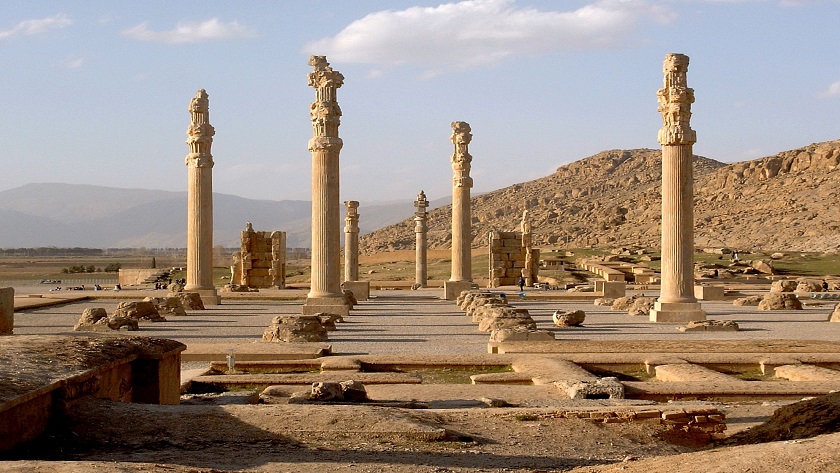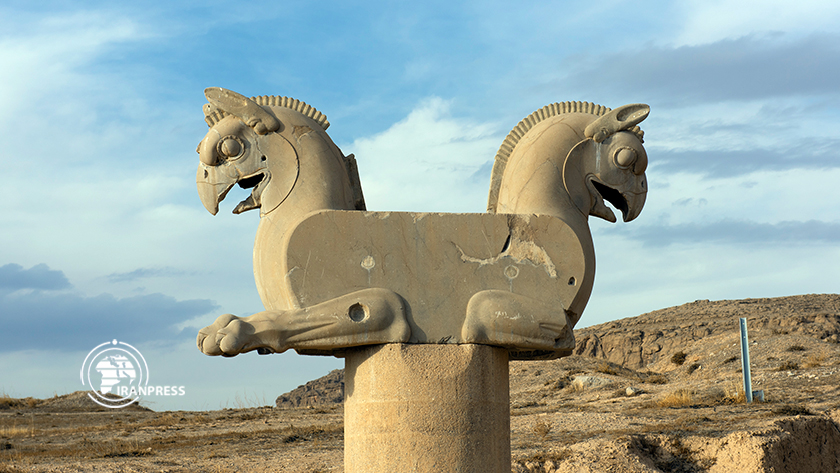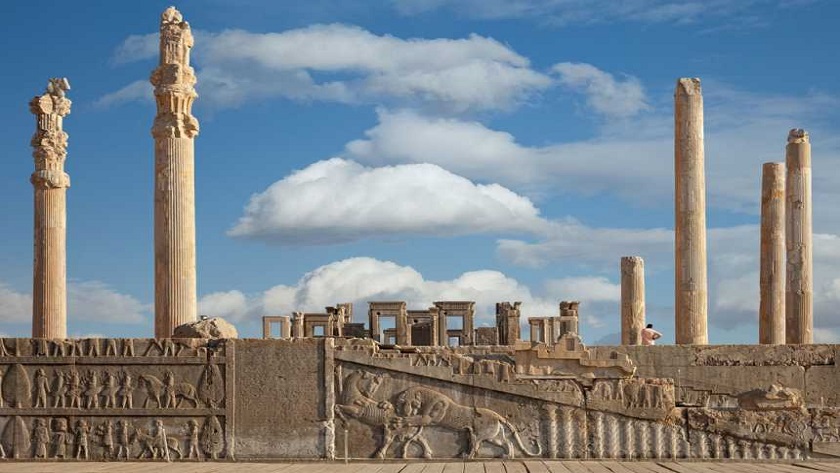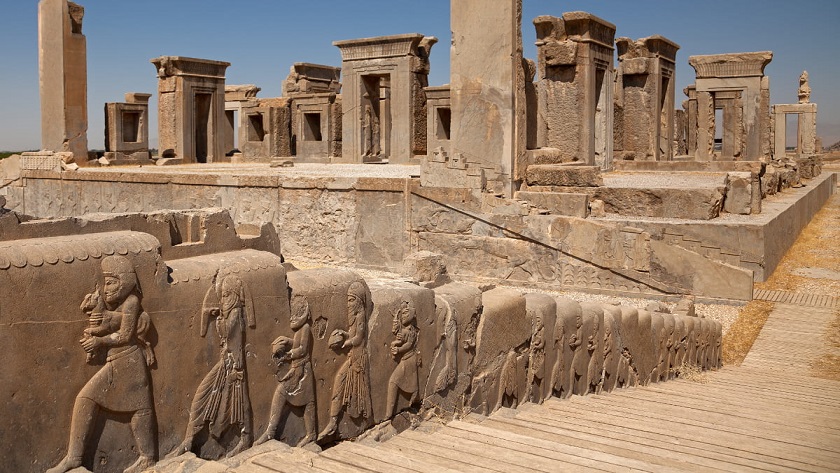Iran Press/Iran News: Persepolis, Old Persian Parsa, modern Takht-e Jamshīd or Takht-i Jamshīd (Persian: “Throne of Jamshīd,” Jamshīd being a character in Persian mythology), the ancient capital of the kings of the Achaemenian dynasty of Iran (Persia), located about 30 miles (50 km) northeast of Shīrāz in the Fars region of southwestern Iran.
 Persepolis a World Heritage site
Persepolis a World Heritage site
Related news:
Persian Qanat; what Iran is known for
Perspolis; a World Heritage site
Persepolis's ancient complex was registered on the UNESCO World Heritage List in 1979 and is one of the important tourist attractions of Fars province.
Persepolis is a part of Iran's ancient history and culture, built by the order of Darius the Great in 518 BC.
With an area of about 125,000 square meters, the ancient complex of Persepolis is one of the unique masterpieces of Achaemenid architecture in the world.
 The eagle griffin or Homa
The eagle griffin or Homa
Persepolis is a symbol of Iranian artists' creativity in using the culture of various peoples such as the Egyptians, Babylonians, Greeks, Medes, and Armenians who were under the rule of the Achaemenids.
One of the most beautiful palaces in the Persepolis complex is the Apadana Palace, whose amazing and unique columns and stairs still stand. The construction of the Apadana palace began in the epoch of Darius the Great and was completed after 30 years during the reign of Xerxes.
Related news:
Iranian Turquoise; what Iran is known for
 The Apadana (audience hall) of Darius I at Persepolis
The Apadana (audience hall) of Darius I at Persepolis
Related News:
Isfahan; 'Half of World'
Architecture
Darius built his extraordinary citadel on an immense half-artificial, half-natural terrace covering 125,000 square meters. The buildings at Persepolis include four general groupings: residential quarters, a treasury, ceremonial palaces, and fortifications.
Persepolis was improved and upgraded with every new ruler who was bringing something of his own to the development of Persepolis.
Noted structures include the Great Stairway, the Gate of All Nations, the Apadana, the Hall of a Hundred Columns, the Tripylon Hall and the Tachara, the Hadish Palace, the Palace of Artaxerxes III, the Imperial Treasury, the Royal Stables, and the Chariot House.
 Engraving of a Winged Human Faced Lion guardian in Persepolis
Engraving of a Winged Human Faced Lion guardian in Persepolis
Persepolis was the seat of government of the Achaemenid Empire, though it was designed primarily to be a showplace and spectacular center for the receptions and festivals of the kings and their empire. The terrace of Persepolis continues to be, as its founder Darius would have wished, the image of the Achaemenid monarchy itself, the summit where likenesses of the king reappear unceasingly, here as the conqueror of a monster, there carried on his throne by the downtrodden enemy, and where lengthy cohorts of sculpted warriors and guards, dignitaries, and tribute bearers parade endlessly.
 The East Stairs of the Apadana show a procession of people bringing tribute to the Achaemenid king.
The East Stairs of the Apadana show a procession of people bringing tribute to the Achaemenid king.
Related News:
Isfahan; Jewel of tourism with masterpiece of Iranian architecture
Persepolis: The Grandest of Ancient Capital Cities
No costs were spared. The city was meant to be a showplace for the might, wealth, and abilities of the Achaemenid kings and the Persian Empire. Vast amounts of luxurious and costly materials were imported from every known country in the ancient world, including Lebanese cedarwood, purple dye, expensive metals, Egyptian cotton, and Indian gold.
 A reconstructed image shows how beautiful was Persepolis
A reconstructed image shows how beautiful was Persepolis
Construction materials included stone, mudbrick, and wood. Decorations were lavishly applied, including exquisite reliefs, and perfectly made fired and glazed bricks of yellow, brown, and green. It is surmised that the double doors of the main buildings in the royal complex were made of wood and covered with elaborately decorated metal.
Related News:
Gate of ancient Parse city in Perspolis was discovered
Ruins and rediscovery
Persepolis would remain an important site until it was sacked, looted, and burned under Alexander the Great of Macedon in 330 B.C.E., after his victory over Darius III at the Battle of Gaugamela. The valuables were stripped away from the walls and taken out in the wish to destroy the history and legacy of the entire civilization.
 Ruins of the Apadana’s columns
Ruins of the Apadana’s columns
It was not until 1931 CE that professional excavations began and Persepolis again rose from the sands. Its remains are striking even today, leading UNESCO to register the site as a World Heritage Site in 1979.
 Relief of Apadana place, destroyed by Alexander
Relief of Apadana place, destroyed by Alexander
Persepolis is not only a symbol of Iran, but its significance and grandeur are embedded in the psyche of Iranian people today. For this population, it’s not just the ruins of a forgotten empire. It’s the place where the Cyrus Cylinder, the first charter of human rights that expressed tolerance and equality for all religions, races, and languages, was recorded. (It is now in the British Museum).
Read More:
Iranian Carpet; what Iran is known for
Persepolis complex; architectural masterpiece under Achaemenids
Ashkan Salehian

